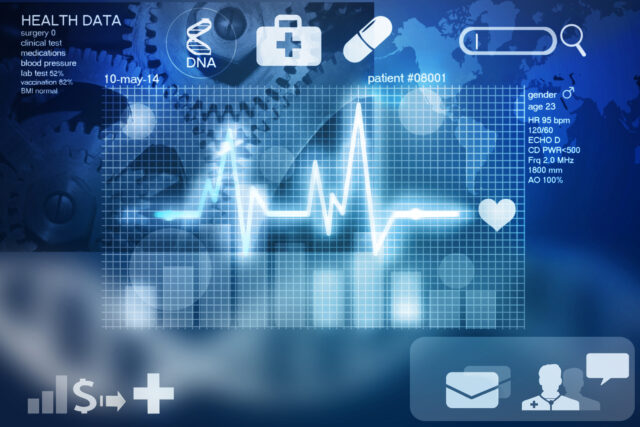
The sweeping digital transformation trend is more than apparent and is not subsiding anytime soon. Industry by industry, we can see that entire products and services are switching to digital environments. As traditional ones, healthcare and medicine also have made a giant leap towards innovation in the past couple of years. While proponents advocate for the idea of healthcare personalisation and health cautiousness, sceptic’s concerns touch on sensitive topics such as data privacy and mHealth app security.
From my experience working in Dreamix– a bespoke software development company, I know that digitalization is a process already set in motion across all of our healthcare and pharma partners. In fact, consumer trends is one of the leading factors prompting this radical digital movement. Therefore, every company that wants to stay relevant and competitive in the ever-changing business circumstances of the 21st century directs its efforts towards finding the right tech vendor to smooth out the inevitable transition.
1. Changing Consumer Behaviour

Shifting consumer behaviour is a powerful driving force for companies to embrace digitalisation. As a way to adapt to changing food habits, more balanced personal care routines and overall health consciousness, businesses develop many mobile apps that cover the extensive market needs. From mental self-care apps for journaling and self-reflection to sleep or fitness trackers via wearable devices – health software solutions are currently bombarding AppStore and GooglePlay, ranking as one of the top-performing categories along with entertainment and personal finance.
On average, consumers are now more demanding in regards to what they choose to devote their attention to, which also influences the whole digital healthcare arena. Moreover, actively seeking relevant medical information, today’s younger generations (Millenials and Gen Zs in particular) strive to be empowered and in control of their own health. At the same time, the pressure is on governments to adjust existing policies and adopt new regulations, giving companies and software developers greater freedom to serve the community in a positive way.
2. Effortless Doctor-Patient Communication

In ancient Greece, the medical practice required doctors to be both physicians and service providers, going from patient to patient, visiting them personally at home. The reputation and medical fees were almost entirely based on the financial capabilities of the patient, and until the 18th century, whoever could afford a good doctor received good treatment. Later on, European states began to play a more intensive role in healthcare, and primary care was introduced in the mid 20th century, laying the foundation of the personal doctor-patient relationships. More doctors worked in private offices, so that home visits became an exception.
Fast forward to the present days when patients are more connected with their healthcare providers than ever. The digitalisation wave in medicine began as early as the 1970es with the introduction of the first electronic health records (EHR) and then rapidly started to form an innovation snowball effect. Nowadays, the best comparison of electronic health records software, like Practice Fusion can help health care providers access patient’s records easily.
This comprehensive timeline shows the most recent digital advancements in the sector. It’s thanks to cutting-edge technology and the innovative human spirit that in just 13 years, the focus shifted from the first mention of the word “e-patient” in 2007 to an FDA’s approval for an AI-driven ultrasound device.
3. A Leap Towards Affordable Healthcare

Many claim that healthcare’s future is digital but what difference will this whole digitalisation bring regarding service affordability? Even simple custom healthcare software solutions such as appointment scheduling tools or online patient-doctor chat tools can be effective cost-reduction options. It’s no secret that medical professions are busy and with hectic schedules, so every working solution that eases daily processes is more than welcome. In fact, a 2024 study reveals physicians’ opinion that digital tools can facilitate a deeper doctor-patient relationship as knowledgeable patients tend to be more involved and responsible.
The Covid-19 pandemic in early 2024 showed us just how dependable our society is on digital technologies. As digitalisation has already been a trend for a while, it was possible to quickly re-arrange service distributions in healthcare facilities and hospitals and provide remote video doctor appointments as an additional way to stay in touch. In addition, newer incentives such as pay-for-performance (P4P) and public-private-partnerships (PPP) also reflect in more custom software usage, e.g. EHR, OCR, e-prescription tools among healthcare provides.
4. New Investments on the Horizon

According to estimations, around 90% of market players are affected by the speeding digitalisation in the medical industry. This means that almost an entire industry has to undergo digital transformation, but how is this going to happen? CB Insights research reports that the global digital healthcare sector reached its all-time high of $9bn in Q1 2024.
As insurers, political decision-makers, software developers and healthcare providers unite their efforts, the landscape is slowly but surely experiencing its biggest disruption so far. Telehealth startups and companies breaking the status quo choose to invest more of their capital in meaningful technologies as a way to future-proof their business. Healthcare coaching, fertility trackers, mental health app, online psychotherapy platforms, app-enabled wearables and other data-driven software solutions are just the beginning, and we’ll have to wait and see what the future holds.
5. High Hopes Regarding AI

Artificial Intelligence, or AI, is among the top-ranked technologies that promise to reduce healthcare costs significantly. This is due to its capabilities to automate specific manual tasks such as filling out EHRs or prescriptions or routine check-up reminders. As a direct consequence, doctors are less burdened with administrative tasks and have more time to devote to their patients. Plus, automatisation of tasks can help boost doctor’s job satisfaction and even help prevent burndown.
However, AI can do much more than automation. After all, what we mean by intelligence is the human capacity to solve problems and to exhibit rational behaviour based on previous experience adapted to current situations. This is precisely what we expect AI machines to do sometime in the future, but for now, we’re betting on its massive potential to handle and make sense of Big Data and give reliable predictions based on evidence. For instance, AI software solutions can play a crucial role in extracting targeted information regarding rate diseases and designing so-called orphan drugs.












